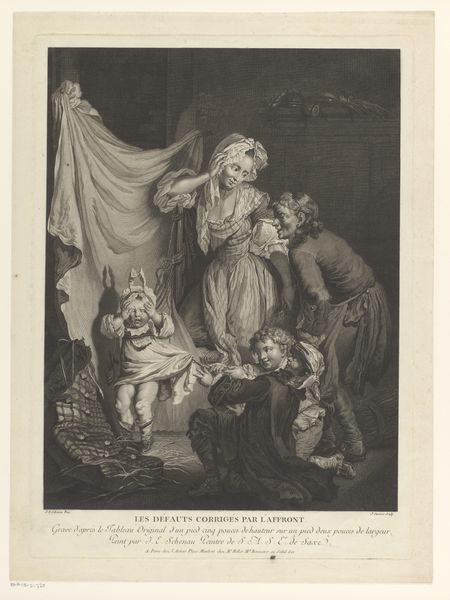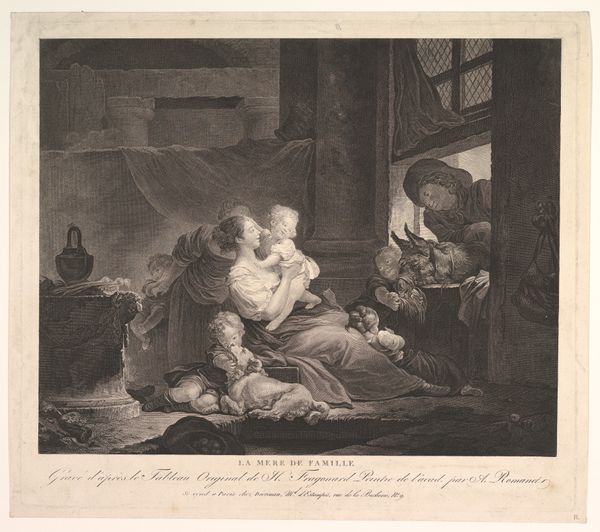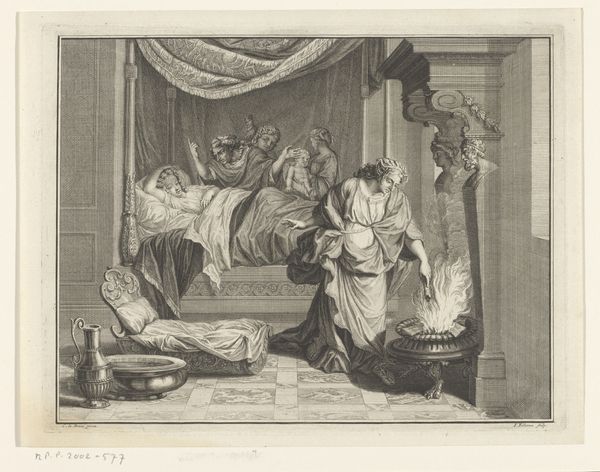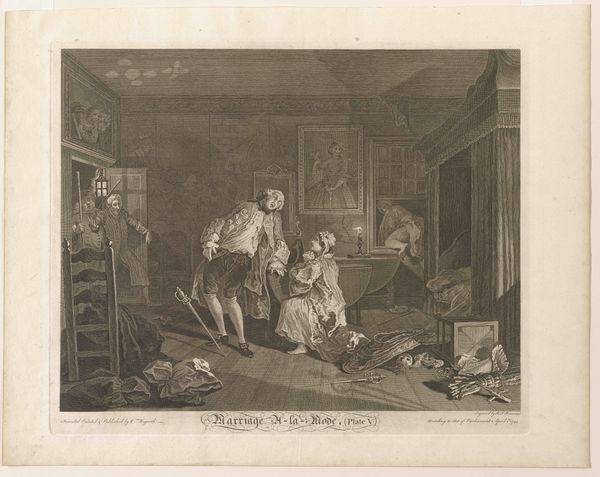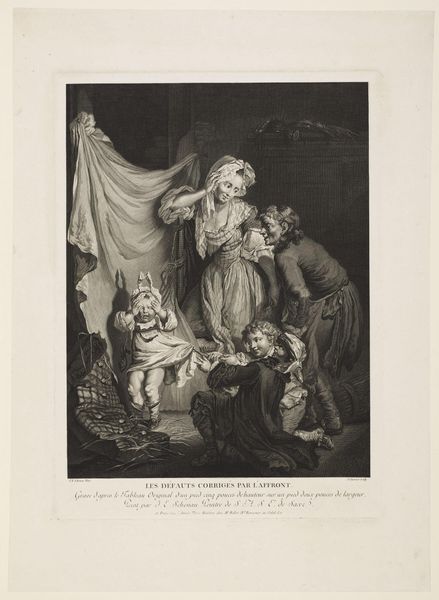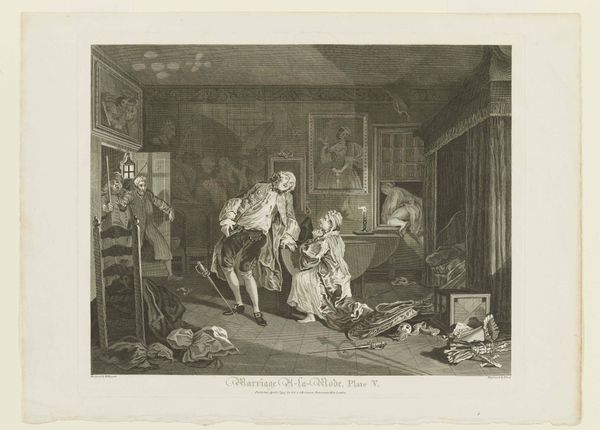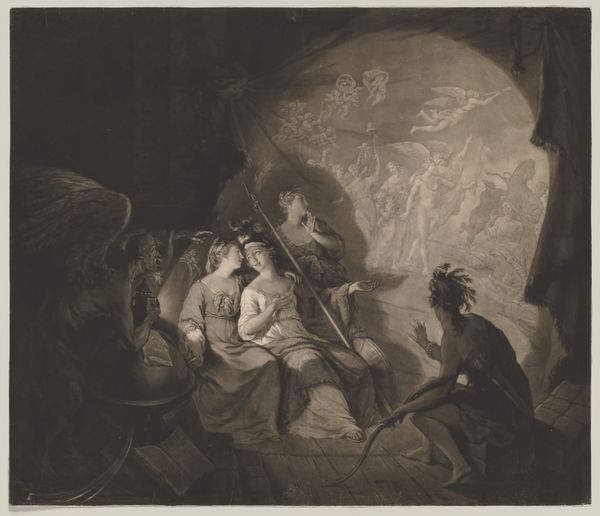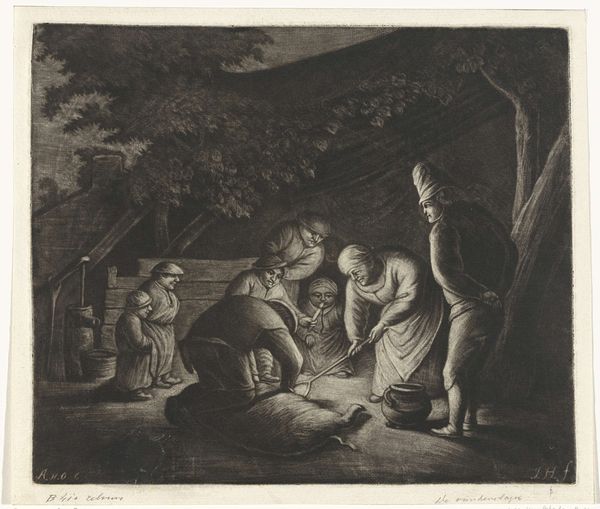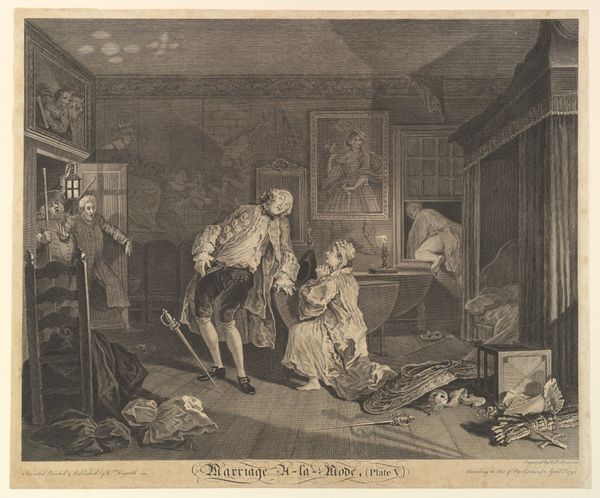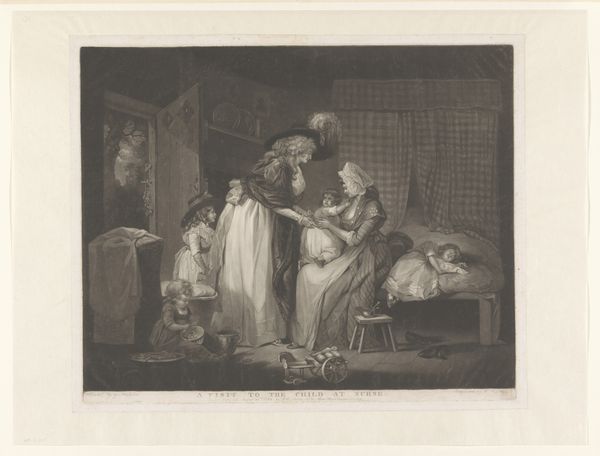
print, engraving
#
narrative-art
# print
#
romanticism
#
19th century
#
history-painting
#
engraving
Dimensions: height 317 mm, width 386 mm
Copyright: Rijks Museum: Open Domain
Editor: Here we have Charles Howard Hodges' engraving, "Geboorte van Christus," made in 1807 and held at the Rijksmuseum. I’m struck by how the dramatic lighting creates a real sense of wonder. What do you see in this print? Curator: The symbolism here is fascinating. Think about light itself: consistently, it is a symbol of divinity, knowledge, and revelation across many cultures. What does it mean that the infant Christ is the source of light in this scene? Editor: That’s a good point. The light does seem to emanate directly from him, highlighting the other figures. Is it meant to suggest his divine nature, even as a baby? Curator: Precisely. It visually asserts Christ’s inherent holiness. The shepherds holding the torch are illuminated, but the source is clearly the child. Even the animals respond. They represent the natural world’s recognition of a sacred presence. Think about the donkey and the ox; they carry a heavy cultural and agricultural symbolism across many different cultures. What does that evoke? Editor: The ox and donkey almost feel like silent witnesses. It connects this singular event to something more universal, an almost primordial connection. Curator: And that’s Hodges connecting to a broader cultural narrative. The choice to include the lamb also ties into ideas of sacrifice. It gives you some food for thought about universal cultural beliefs, doesn't it? Editor: Absolutely, looking at how symbols and their interpretations weave throughout history and across different narratives has really changed the way I'm looking at this image. Curator: Yes, I agree. Hodges is pointing us to the profound depth inherent in visual language.
Comments
No comments
Be the first to comment and join the conversation on the ultimate creative platform.

